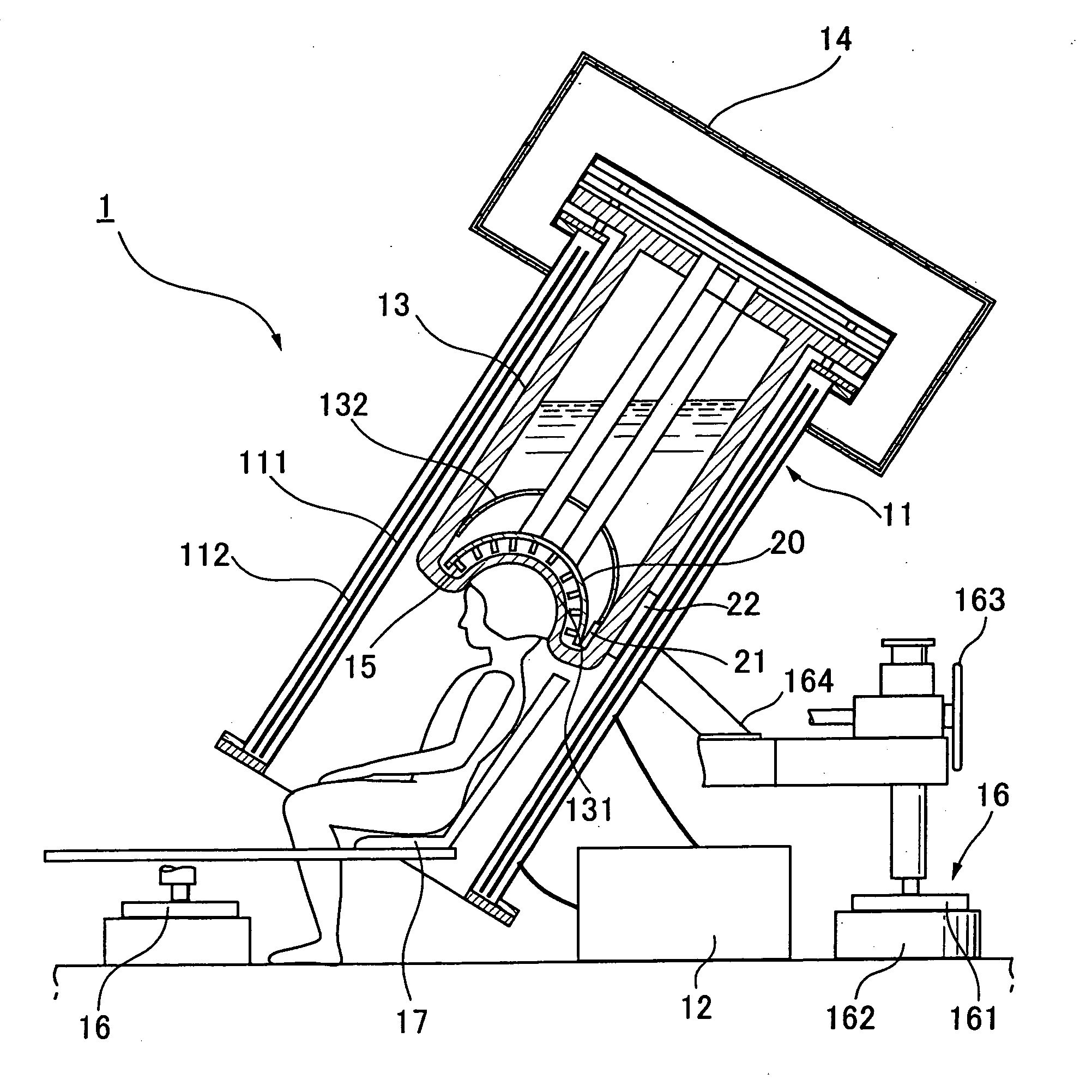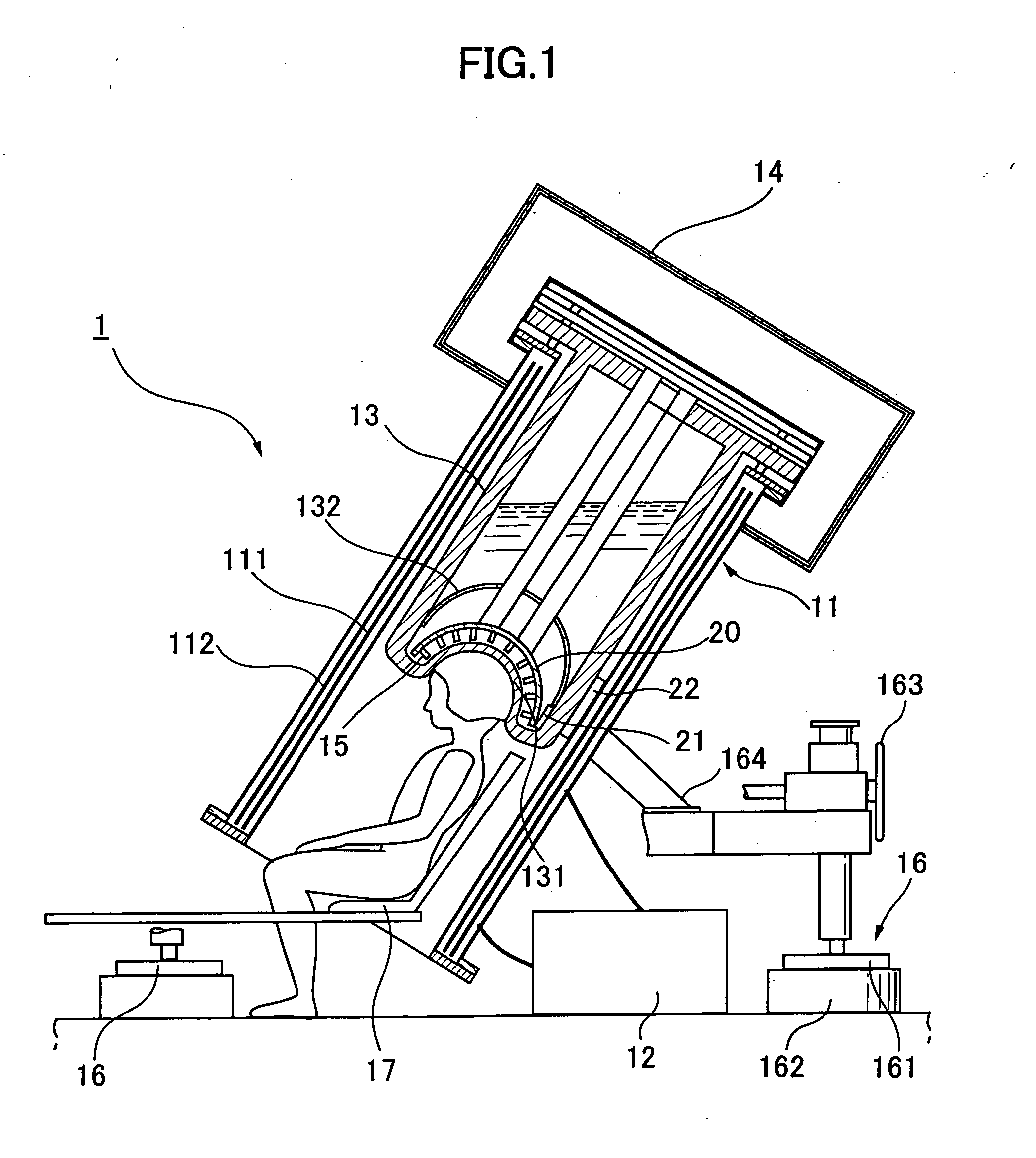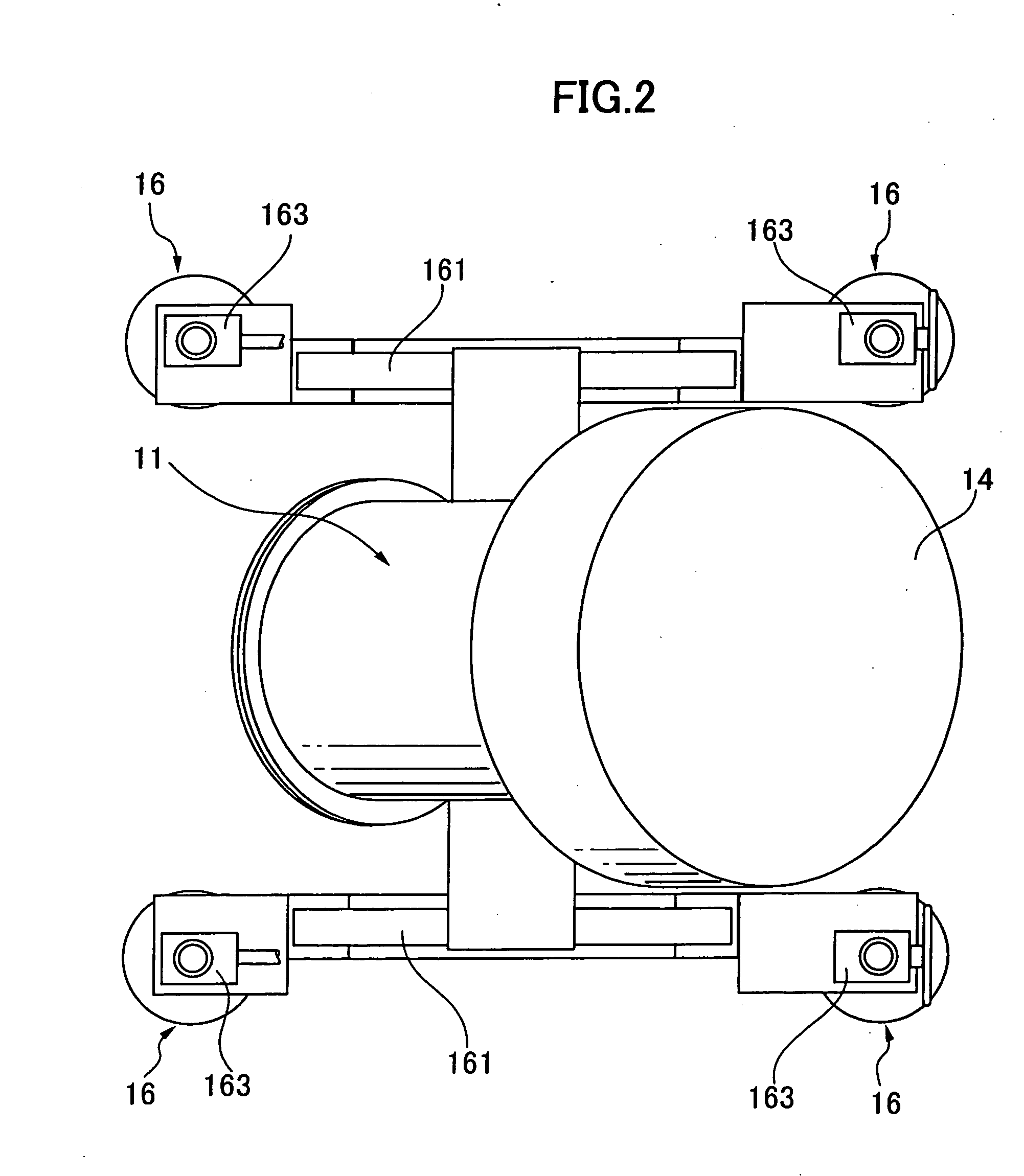Apparatus for measuring the neuro-magnetic field from a human brain and method for operating the same
a technology of neuromagnetic field and apparatus, which is applied in the direction of magnetic field measurement using superconductive devices, instruments, applications, etc., can solve the problems of requiring a lot of money to build, the geomagnetism cannot be spooked, and the existing building's foundation work cannot be practical use, so as to prevent the adverse effect of magnetic sensors, prevent the geomagnetism, and prevent the effect of geomagnetism trapping
- Summary
- Abstract
- Description
- Claims
- Application Information
AI Technical Summary
Benefits of technology
Problems solved by technology
Method used
Image
Examples
Embodiment Construction
[0031] Referring to FIG. 1, a MEG apparatus 1 comprises a vacuum structure 11 of hollow cylinder for thermal insulation which has two cylinders—the one, inner cylinder 111 of high critical temperature superconductor material and the other, outer cylinder 112 of high-permeability magnetic material both arranged coaxially in its annular space; a closed-cycle Helium refrigerator 12 to circulate a cooled Helium gas in the pipe welded to the outside of the inner cylinder 111 in the vacuum structure 11 for thermal insulation; an liquid-Helium dewar 13 fixedly arranged in the vacuum structure 11 for thermal insulation; and a top cover 14 put on the top of the vacuum structure 11 for thermal insulation, as already described above and shown in FIG. 5.
[0032] The lower part of the liquid-Helium dewar 13 defines a head accommodating area 131 to accommodate the head of a patient (the subject under inspection). As seen in the drawing, the liquid-Helium dewar 13 has a plurality of SQUID magnetic ...
PUM
 Login to View More
Login to View More Abstract
Description
Claims
Application Information
 Login to View More
Login to View More - R&D
- Intellectual Property
- Life Sciences
- Materials
- Tech Scout
- Unparalleled Data Quality
- Higher Quality Content
- 60% Fewer Hallucinations
Browse by: Latest US Patents, China's latest patents, Technical Efficacy Thesaurus, Application Domain, Technology Topic, Popular Technical Reports.
© 2025 PatSnap. All rights reserved.Legal|Privacy policy|Modern Slavery Act Transparency Statement|Sitemap|About US| Contact US: help@patsnap.com



